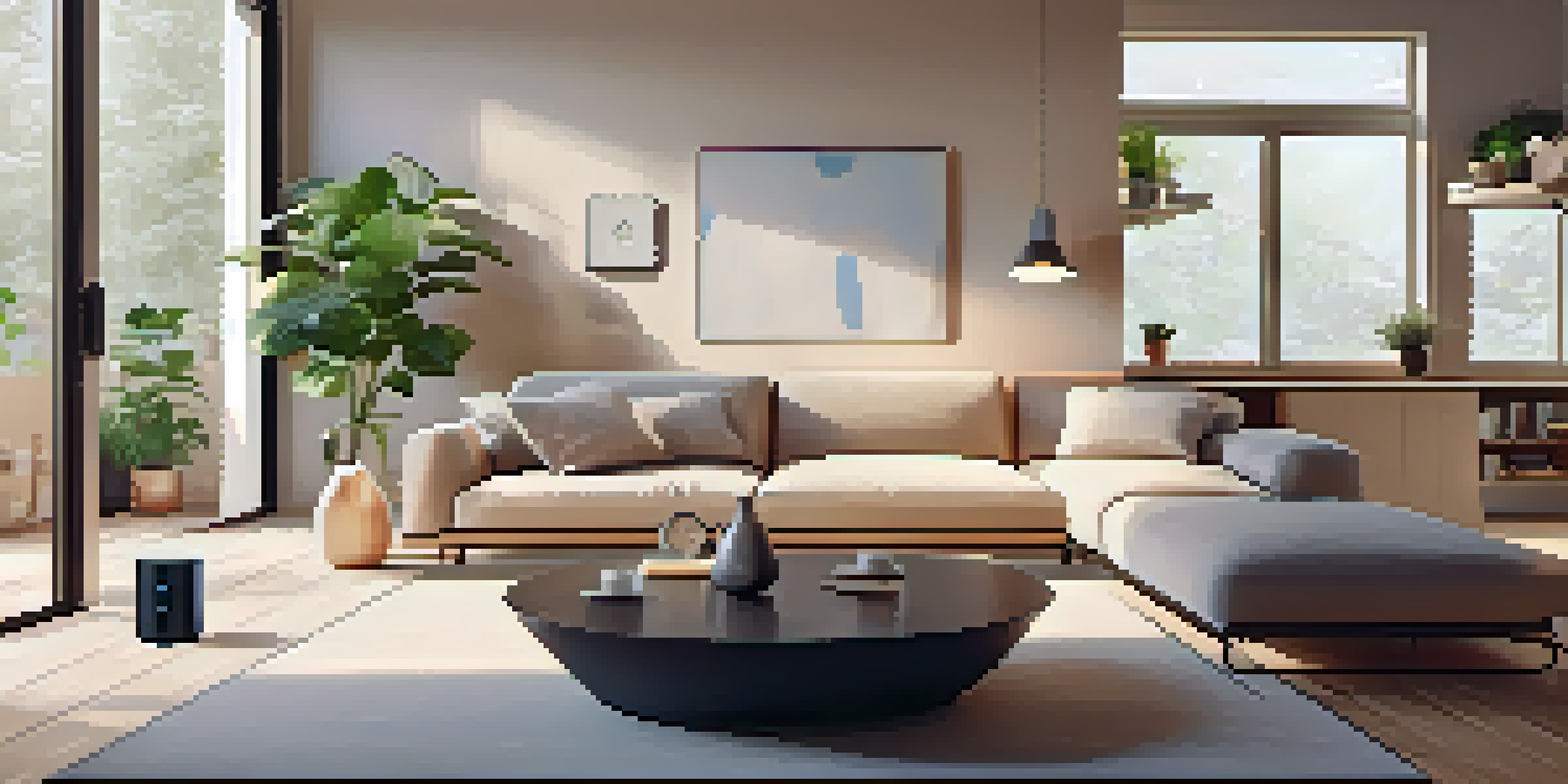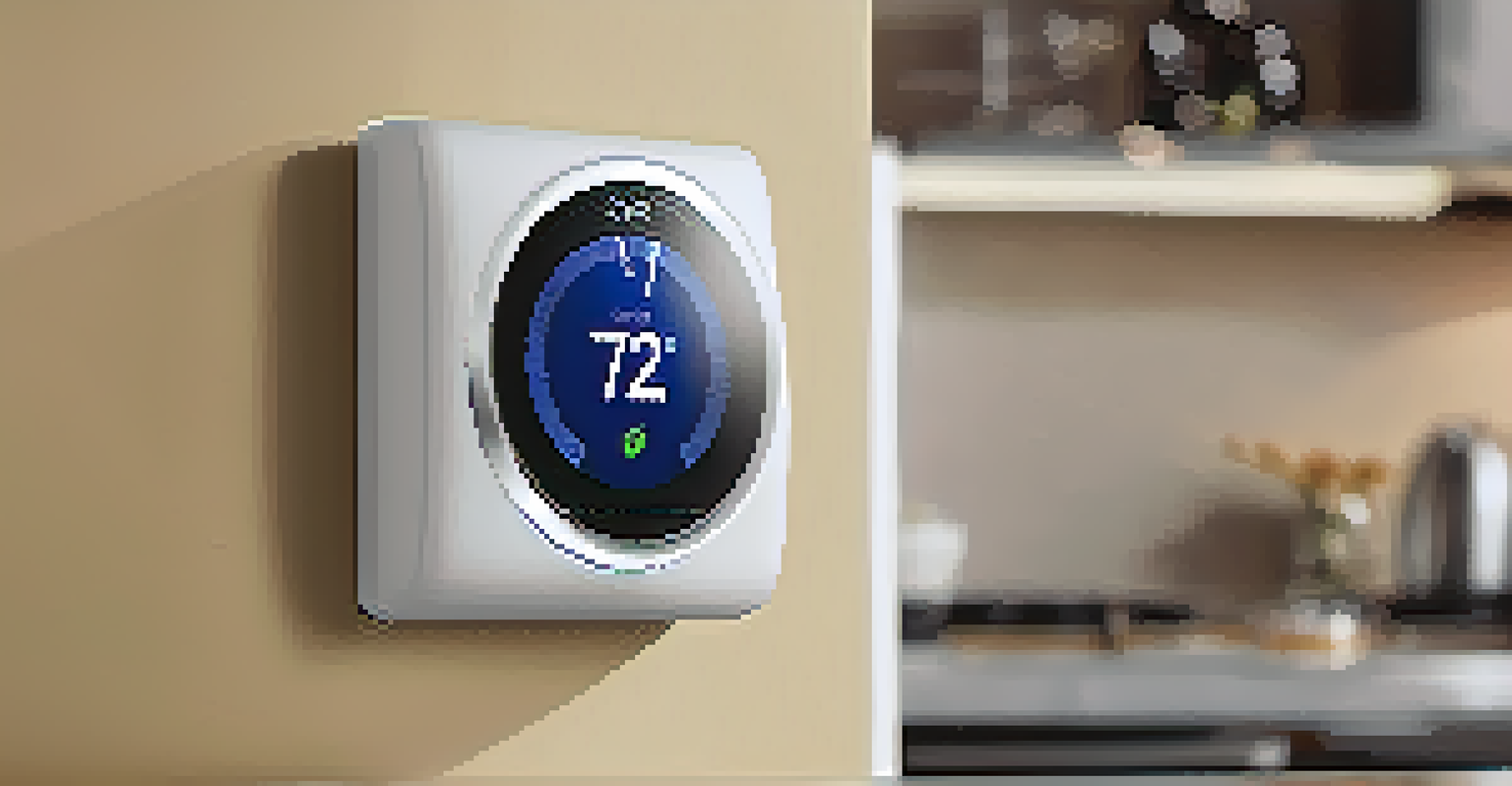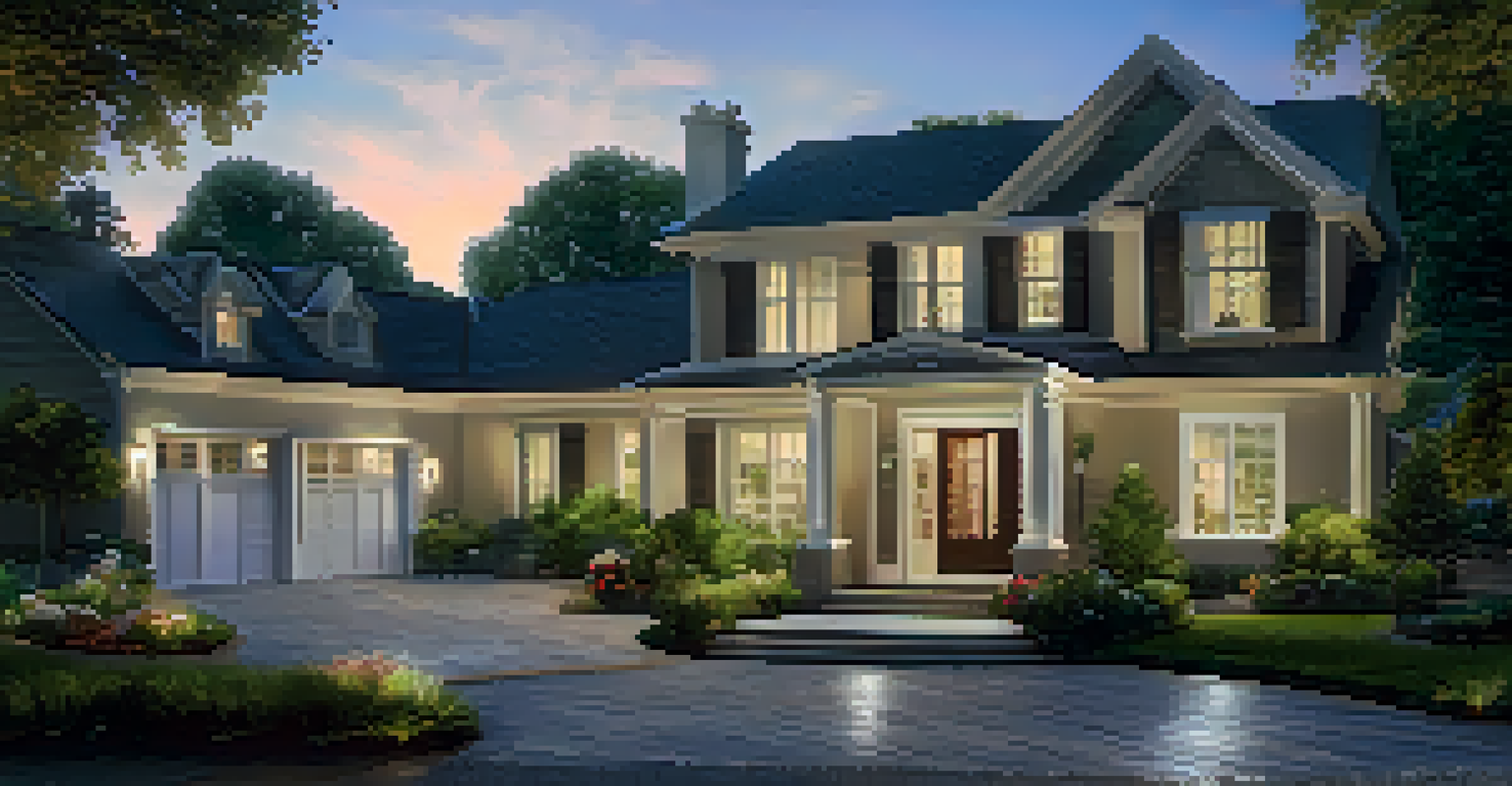Smart Home Automation: Customizing Your Living Space

Understanding Smart Home Automation Basics
Smart home automation refers to the ability to control various devices in your home through a centralized system. Imagine being able to manage your lights, thermostat, and security cameras all from your smartphone or tablet. This technology not only adds convenience but also enhances energy efficiency and security. By integrating these systems, you can create a living space that responds to your needs.
The future is already here — it's just not very evenly distributed.
At its core, smart home automation relies on connected devices that communicate with each other via the internet. For instance, smart bulbs can adjust their brightness based on the time of day or your mood. This interconnectedness means you can automate routines, like having your coffee maker start brewing as soon as your morning alarm goes off. The possibilities are growing as new devices and applications emerge.
As you explore smart home options, it's essential to understand the different types of systems available. Some are more compatible with certain devices than others, so take time to research what works best for your home. The right choice can significantly enhance your daily life, making mundane tasks easier and providing a level of comfort that traditional setups simply can't match.
Choosing the Right Smart Devices for Your Home
When it comes to smart home automation, not all devices are created equal. From smart speakers to thermostats, you'll want to choose gadgets that fit seamlessly into your lifestyle. Consider starting with devices that you find most beneficial. For instance, if you often forget to turn off lights, smart bulbs can be a game-changer.

It's also important to think about compatibility. Some devices work best with specific ecosystems, like Google Home or Amazon Alexa. Ensuring that your chosen devices can communicate with each other will save you headaches down the road. Take the time to read reviews and check compatibility before making any purchases.
Smart Home Automation Basics
Smart home automation allows you to control various devices from a centralized system, enhancing convenience and energy efficiency.
Don’t forget about security when selecting your smart devices. Many homeowners overlook this aspect, but a compromised device can put your personal information at risk. Select brands known for their security features and keep your software updated to safeguard your home network.
Creating a Smart Home Hub for Easy Control
A smart home hub acts as the central command center for all your connected devices. Think of it like the brain of your smart home, allowing you to control everything from one location. By investing in a reliable hub, you can streamline your operations, making it easier to manage multiple devices without the hassle of juggling different apps.
Technology is best when it brings people together.
Many hubs come with voice control capabilities, which can add a layer of convenience to your daily routine. You can simply say, 'Turn on the living room lights' or 'Set the thermostat to 72 degrees,' and watch as your commands are executed in real time. This hands-free operation is particularly useful when your hands are full or when you're on the go.
Additionally, a smart home hub can enhance automation through routines and schedules. For example, you can set a routine that turns off all devices at bedtime or adjusts the thermostat before you arrive home from work. This level of customization not only saves energy but also creates a comfortable environment tailored to your preferences.
Enhancing Home Security with Smart Technology
One of the most compelling reasons to embrace smart home automation is the enhanced security it offers. Smart cameras, doorbells, and locks provide real-time monitoring and alerts, allowing you to keep an eye on your property from anywhere. Imagine receiving a notification on your phone when someone approaches your front door, even when you're miles away.
Smart locks allow keyless entry, letting you grant access to family or friends remotely. No more hiding spare keys under the doormat! Instead, you can simply send a code to someone when they need to come over, providing both convenience and peace of mind.
Choosing Compatible Devices
Selecting the right smart devices that are compatible with your chosen ecosystem is crucial for a seamless smart home experience.
Moreover, many security systems integrate with other smart devices to create a comprehensive security network. For example, your smart lights can flash when your security cameras detect motion, deterring potential intruders. By investing in these technologies, you not only protect your home but also enjoy the comfort of knowing you’re in control.
Optimizing Energy Efficiency in Your Smart Home
Smart home automation can significantly improve your energy efficiency, leading to lower utility bills and a smaller carbon footprint. For instance, smart thermostats learn your habits and adjust heating and cooling accordingly. This means your system works more efficiently, only using energy when needed.
Smart lighting systems also contribute to energy savings. With options like motion sensors and timers, you can ensure that lights are only on when a room is occupied. Picture walking into a room and having the lights automatically turn on, then off when you leave—no more wasted energy.
Additionally, smart plugs allow you to control devices that may not be inherently smart, such as lamps or appliances. With a quick app tap, you can turn off devices that are often left on, like a coffee maker or charger, helping you to stay mindful of your energy usage.
Customizing Your Smart Home Experience
One of the joys of smart home automation is the ability to customize your living space according to your preferences. You can create unique scenes or moods with just a few taps on your smartphone. For instance, imagine setting a 'movie night' scene that dims the lights, pulls the blinds, and fires up your entertainment system—all at once.
You can also adjust your home environment based on your daily routines. Perhaps you prefer a bright, energizing atmosphere in the morning and a cozy, dim setup in the evening. With smart home technology, you can schedule these changes automatically, ensuring that your space always matches your mood.
Future of Smart Home Tech
The future of smart home automation promises increased integration and intelligence, making homes more intuitive and environmentally friendly.
Don't be afraid to experiment with different setups as your needs evolve. Whether you're hosting a gathering or enjoying a quiet night in, the flexibility of smart home automation means you can adapt your environment to suit any occasion.
Future Trends in Smart Home Automation
As technology continues to advance, the landscape of smart home automation is evolving rapidly. New innovations are making devices more intuitive, user-friendly, and interconnected. For example, artificial intelligence is beginning to play a larger role, enabling devices to learn preferences and make adjustments automatically without your input.
Moreover, the integration of renewable energy sources, like solar panels, with smart home systems is also on the rise. Imagine a home that not only manages energy usage efficiently but also generates its own power. This trend is helping homeowners reduce their reliance on traditional energy sources and lower their overall environmental impact.

As we look to the future, expect to see even more seamless integration between smart devices and our daily lives. The goal is to create homes that not only respond to our commands but also anticipate our needs, making life not just easier, but more enjoyable.